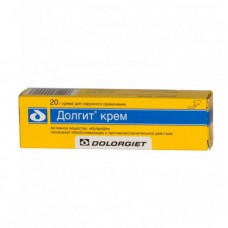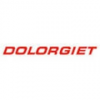Expiration date: 01/2026
The composition and form of issue:
Cream for external use 5% .100 g contains:
ibuprofen 5 g
excipients: triglycerides medium glyceryl monostearate propylene glycol macrogol 100 stearate macrogol 30 stearate xanthan gum (Central F) methyl parahydroxybenzoate sodium lavender oil, orange flower oil (nerlove oil) purified water
at 20, 50 and 100 g aluminium tubes, sealed with membrane and screw-on plastic cap in a pack a cardboard 1 tube.
Gel for external use 5%. 100 g contains:
ibuprofen 5 g
excipients: isopropanol dimethylhydrogensiloxane (Solketal) poloxamer abc=10156101 (Poloxamer 407, Pluronic F127) triglycerides medium (Miglyol 812) purified water, lavender oil, orange flower oil (nerlove oil)
on 20, 50 or 100 g in aluminum tubes with internal protective lacquer coating, capped membrane and screw-on plastic cap in a pack of cardboard 1 tube.
Description of dosage form:
Cream: homogeneous, soft cream from white to white with a creamy shade of color with a slight peculiar smell.
Gel: a clear, colorless gel with a characteristic odor.
Pharmacokinetics:
When applying the cream (gel) to the skin ibuprofen penetrates deeper tissues (subcutaneous tissue, muscles, joints, synovial fluid) and reaches therapeutic concentrations. Therapeutic effect in the area of application is achieved by direct distribution through the skin in the target tissue. In a small amount is determined in the blood plasma. With the recommended application method, the concentration in the synovial fluid is about 2 µg / ml.
Description of the pharmacological action:
The drug has a local analgesic, anti-inflammatory and anti-edema effect. Suppresses the production of inflammatory mediators. Non-selectively blocks COX-1 and COX-2 and has an inhibitory effect on the synthesis of prostaglandin E2 (PGE2), prostacycline (PGI2) and thromboxane B2 (TV2). Analgesic effect is most pronounced when the pain of an inflammatory nature. Causes a decrease or disappearance of pain syndrome, including pain at rest and in motion, reduces morning stiffness and swelling of joints. Helps to increase range of motion. In addition to anti-inflammatory effect, ibuprofen reduces platelet aggregation at the site of inflammation, as well as migration of leukocytes and release of lysosomal enzymes in the area of inflammation.
Indications:
- inflammatory and degenerative diseases of the musculoskeletal system: articular syndrome with exacerbation of gout, arthritis (rheumatoid, psoriatic, gouty), scapulohumeral periarthritis, ankylosing spondylitis (Bechterew's disease), deforming osteoarthritis, osteochondrosis with radicular syndrome, sciatica, tendonitis, tenosynovitis, bursitis, lumbago, sciatica
- muscle pain (myalgia) of rheumatic and non-rheumatic origin
- injuries (sports, industrial, domestic) without violating the integrity of the skin (dislocations, sprains or ruptures of muscles and ligaments, injuries, post-traumatic swelling of soft tissues).
Contraindications:
Cream
- hypersensitivity to ibuprofen, components of the drug and other NSAIDs
- wet dermatoses
- eczema
- violations of the integrity of the skin (including infected cuts and wounds) at the site of application of the cream
- pregnancy
- lactation
- children under 14 years of age.
Gel
- hypersensitivity to ibuprofen, components of the drug and other NSAIDs
- bronchial asthma, urticaria, rhinitis, provoked by taking acetylsalicylic acid
- wet dermatoses
- eczema
- violations of the integrity of the skin at the site of application of the gel, including infected wounds and abrasions
- pregnancy (III trimester)
- children under 12 years old.
With caution: pregnancy (I–II trimester), lactation.
Side effect:
Usually the drug is well tolerated. In rare cases, there may be temporary signs of local irritation of the skin in the form of redness, swelling, rashes, itching of the skin, burning sensation and tingling. In case of hypersensitivity to NSAIDs, bronchospasm may occur. Long-term use of the drug in particularly sensitive patients may develop systemic side effects, the appearance of which should stop the drug and consult a doctor.
Drug interaction:
You should consult your doctor before using this drug if you are taking any other medicines.
Drug interaction is not described. However, it should be borne in mind that even with local use ibuprofen has a systemic effect and, theoretically, while using other NSAIDs may increase side effects.
Method of application and doses:
Outwardly.
Cream: applied to the skin in the area of the painful area 3-4 times a day and rubbed with light movements until the drug is completely absorbed. Used strip cream 4-10 cm long, depending on the area of the affected surface.
The duration of treatment depends on the severity of the disease and the nature of the damage and is an average of 2-3 weeks.
Gel. A strip of gel 5-10 cm long is applied to the area of damage and thoroughly rubbed in light movements until completely absorbed 3-4 times a day. The duration of treatment depends on the severity of the disease and the nature of the damage and is an average of 2-3 weeks.
Overdose:
Cases of overdose cream or gel is not described. In case of accidental oral administration, it is necessary to clean the stomach (cause vomiting, take activated charcoal) and consult a doctor. Further treatment, if necessary, symptomatic.
Special instruction:
In severe cases, it is recommended to use the cream or gel externally with taking other dosage forms of NSAIDs (parenteral, inward, rectally).
Avoid contact with cream or gel in the eyes and mucous membranes.
The use of the drug has no effect on activities requiring increased attention, coordination of movements, high speed of mental and physical reactions (for example, transport drivers, persons working with complex mechanisms, etc.).
Comment:
Exclusive distributor-PRO.MED.CS Praha a.s. (Czech Republic).






